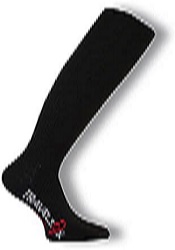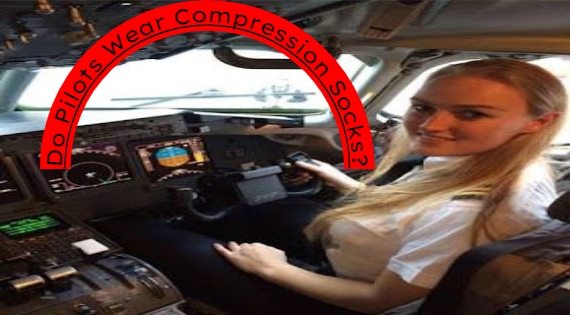
A question often asked about Flight Crew health and welfare is “Do Pilots Wear Compression Socks?”
Do Pilots Wear Compression Socks?
1. Maintain Your Health
Pilots are the most vulnerable to job loss from health issues than any other industry.
This occupation must go through intense physical exams plus pilot proficiency checks every six months. They all must undergo random drug and alcohol testing.
Because they have a great responsibility to protect lives.
I think all the judges lawyers, and doctors should be tested s well, especially about drugs.
Pilots must do all they can to maintain health.
2. Deep Vein Thrombosis
Flight crew members and flight attendants can benefit their circulation greatly by using compression socks.
Long haul flights while sitting for long periods can cause DVT (Deep Vein Thrombosis).
This is a condition that can cause blood clots in the lower leg thigh or pelvis or possibly arms and can lead to pulmonary embolism. A clot forms in the extremities and is transported to the lung through arteries and lodges in the lung.
Pulmonary embolism can cause death. Mortality rates are 30% if left untreated and 8% with treatment.
The risk of death is 10% with acute sudden onset.
Symptoms of an embolism are swelling in one leg, (rarely both legs), associated with acute chest pain, redness or discolored skin, and warmth in the leg. Leg pain will feel as though there is cramping in the muscles.
3. Health Benefits
The use of compression socks helps everyone. They help promote circulation by helping force blood from the lower extremities back to the heart.
Anyone who sits for long periods of time with little activity can be susceptible to DVT.
Many pilots that sit and do not have any physical activity for long periods of time are very susceptible to reduced blood flow in the feet and lower legs.
Remedy?
Compression socks.
4. What Types Of Compression Socks Do Pilots Wear?
There are many brands and styles of compression socks to sort through and I always thought they were all the same. I also was wrong about why they were needed. Like after having surgery and for heart patients but there is more to it than that.
Plus I never gave much thought as to why I might have some swelling in my legs.
As it turns out I needed to educate myself about my need for compression socks.
There are ankle socks and below-knee socks and above-knee types for specific areas of swelling and they make them with graduated compression up the leg or all the same compression.
It comes down to self-evaluation and the decision of your specific need.
From there it’s a trial and error method to find what suits you.
Conclusion
While it is true that many pilots and flight attendants do not wear compression socks, it just makes good sense. Health should be a major factor.
Good decision-making is one quality trait for any aviator, commercial or private.
Long haul pilots aboard the larger aircraft can get out of the seat and move about so their need for socks is less than those that don’t have that pleasure.
I have never heard of any long-term studies on pilots who fly unpressurized aircraft for many years about any physical or mental anamolies. A pilots medical exam doesn’t look for an more than overall general health.
I would venture to guess that DVT would be more of a danger for pilots flying above 10,000 feet in unpressurized planes Because of the lower air pressure and density at higher altitudes.
Make your circulation better, your heart happy and feel that great blood flow with compression socks.
